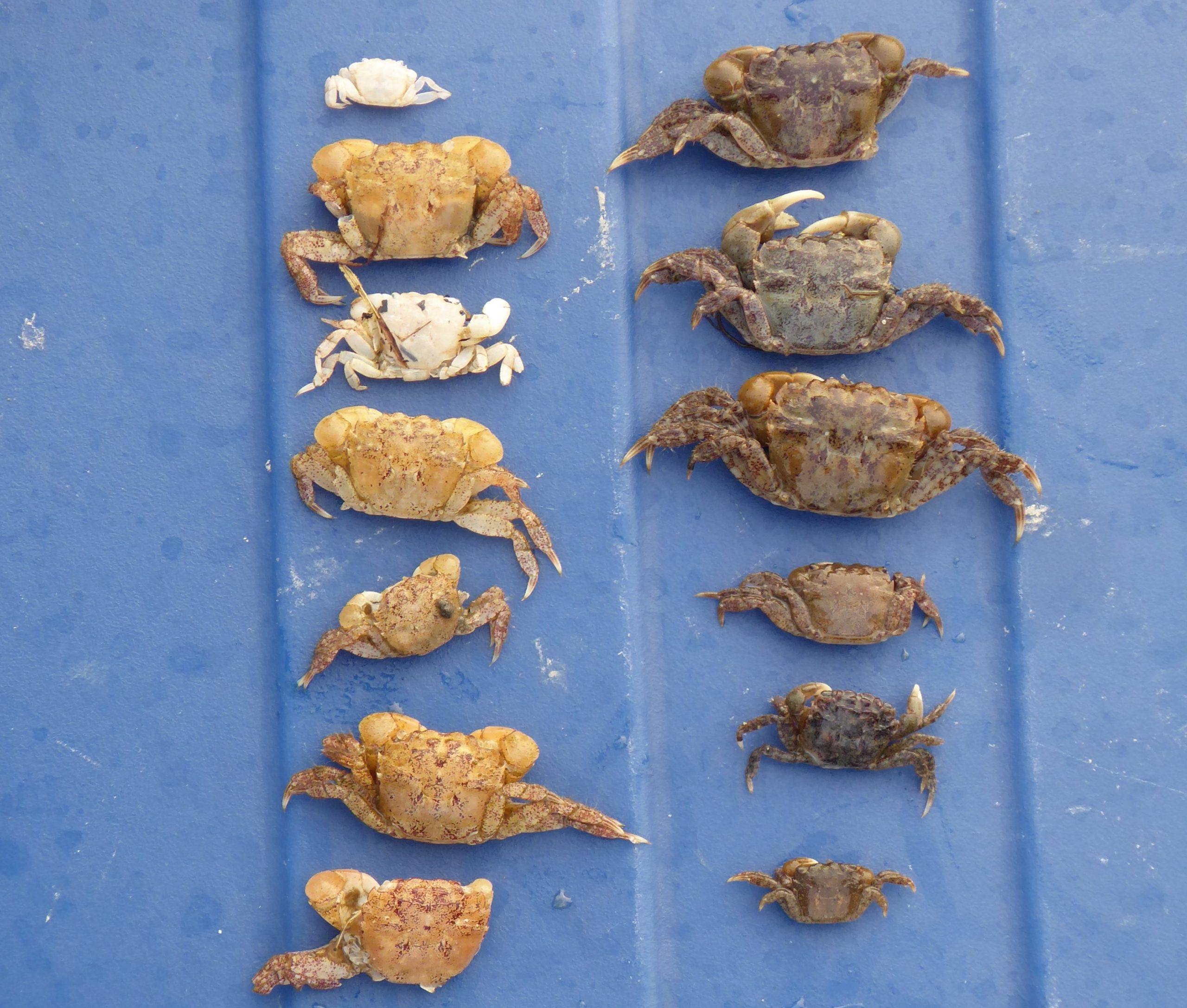Molting is a fascinating natural process that allows crabs to grow. During molting a crab sheds its hard outer shell and grows a new larger one. This enables the crab to increase in size as it grows. Molting is a complex process that involves many physiological changes within the crab’s body. Here is an overview of how crabs molt
The Molting Process
Molting occurs in stages as the crab prepares to shed its shell
-
First, the crab stops eating and finds a safe hiding spot, usually by burrowing under substrate or rocks. This helps protect it during the vulnerable molting process.
-
Next, the old shell separates from the underlying skin. The crab extracts itself from its old shell by pushing and compressing all of its appendages repeatedly. First it backs out, then pulls out its hind legs, then its front legs, and finally comes completely out of the old shell This process takes about 15 minutes
-
With the help of stored water and swelling, the soft crab expands, literally inflating itself to a larger size. This enables the new shell to grow to a larger size than the previous one.
-
A new soft shell rapidly forms underneath the old one. This shell will initially be quite soft and vulnerable.
-
The crab discards the old shell, which it may eat to reclaim calcium. Eating the old shell helps speed up the hardening of the new one.
-
Over the next few days, the new shell hardens through a process called sclerotization. The crab remains hidden until its new shell fully hardens.
The Molting Cycle
Molting does not happen continuously. Crabs molt in cycles.
-
Intermolt: The longest phase, where the crab’s shell is fully formed and hardened. The crab eats a lot to store energy for the next molt.
-
Premolt: The old shell separates from the underlying skin and a new soft shell starts forming underneath. The crab stops eating and finds a safe hiding spot to molt.
-
Molt: The actual shedding of the old shell. This is when the crab is most vulnerable.
-
Postmolt: The new soft shell rapidly forms and then gradually hardens and calcifies over a period of days to weeks. The crab hides until the new shell fully hardens.
The length of the molting cycle depends on the crab’s age, species, and other factors. Younger crabs may molt frequently while older crabs molt less often.
Why Do Crabs Molt?
Molting enables growth. Crabs have hard, rigid exoskeletons that do not expand as they grow. The only way a crab can increase in size is to shed its old shell and grow a larger new one.
Molting also allows:
- Damaged limbs or appendages to be regenerated
- Worn out shells to be replaced
- Reproduction to occur (female crabs must molt before mating)
Without the ability to molt, a crab would be unable to grow and would die within its old shell. Molting is essential to a crab’s survival, enabling it to live long and thrive.
Molting Frequency
How often a crab molts depends on its species, age, diet, and environmental factors.
-
Younger crabs molt more frequently, such as every 1-2 months. Their rapid growth requires frequent molting.
-
Older, fully grown crabs may only molt once a year or less. Growth slows as they near full size.
-
An adequate diet with ample calcium and nutrients supports regular molting. Poor nutrition can inhibit molting.
-
Ideal environmental conditions like proper temperature, moisture, and space also support healthy molting.
Understanding the molting process helps crab owners ensure their pets stay healthy. Providing good nutrition, ample habitat space, and proper molting conditions allows pet crabs to safely grow through frequent molts to reach their full, beautiful potential.

Arthropods – Blue Crab Molting
FAQ
What triggers molting in crabs?
How long does it take for a crab to molt?
What does a crab molt look like?
Do crabs eat their shell after molting?
How long does it take a crab to molt?
Generally, the molting process can take anywhere from a few days to several weeks. The molting process begins when the crab starts to prepare a new exoskeleton under its old one, this process is called premolt, and it can last from a few days to few weeks, it’s the crab’s way to prepare itself for the upcoming molting process.
How do you molt a hermit crab?
Depth: Hermit crabs need to bury themselves in a substrate in order to molt. My rule of thumb is enough substrate to completely bury the crab and then some. This provides them with a safe, dark, and secure place to shed their old exoskeleton and grow a new one. Darkness: Hermit crabs need to be in a dark environment during the molting process.
Can you move a molting crab?
Do not move a crab that has already begun molting. Sometimes, a hermit crab may bury itself in the sand of its normal tank to molt while you, its owner, are sleeping at night. Digging up a molting crab to put it in an isolation tank can cause undue stress to the crab, and could possibly injure or kill it.
What happens when a crab molts?
The crab begins the slow, arduous process of backing out of its old shell, which is then discarded. The newly molted crab pumps water into its tissues in order to inflate the shell to its new size. The new shell will be roughly one-third larger (33%) than the old shell. The new shell reaches its full size within six hours after molting.
